
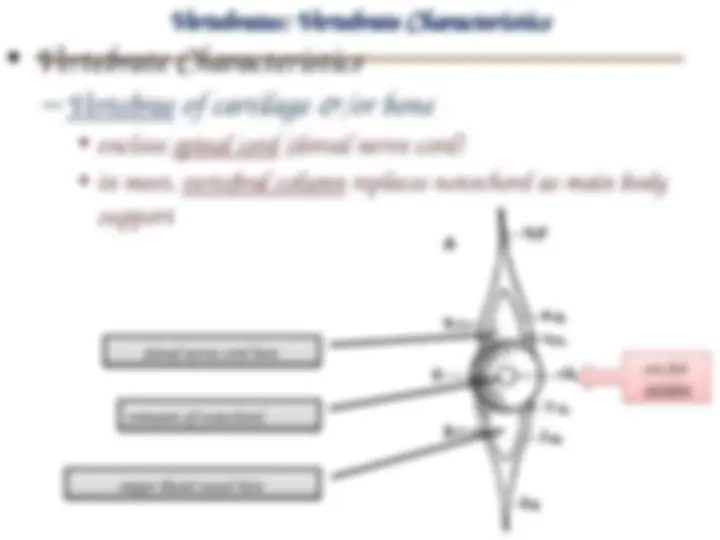
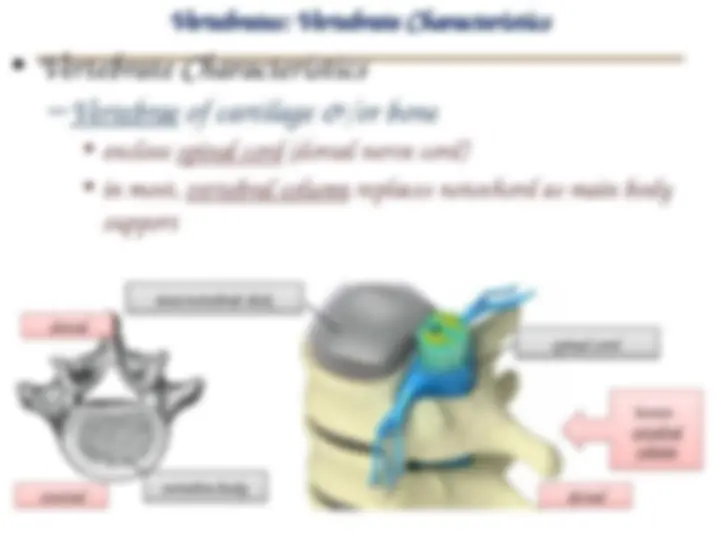
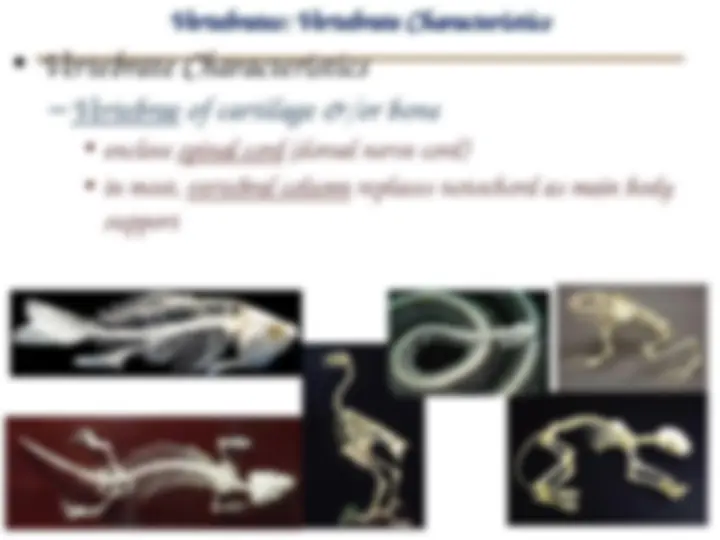
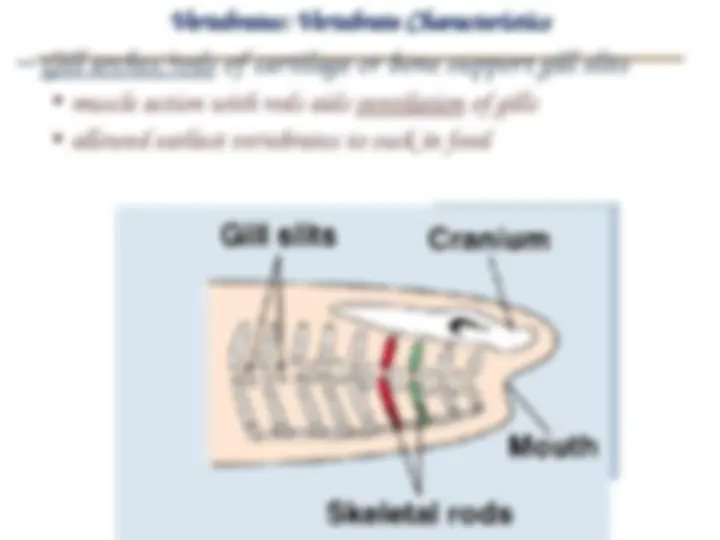
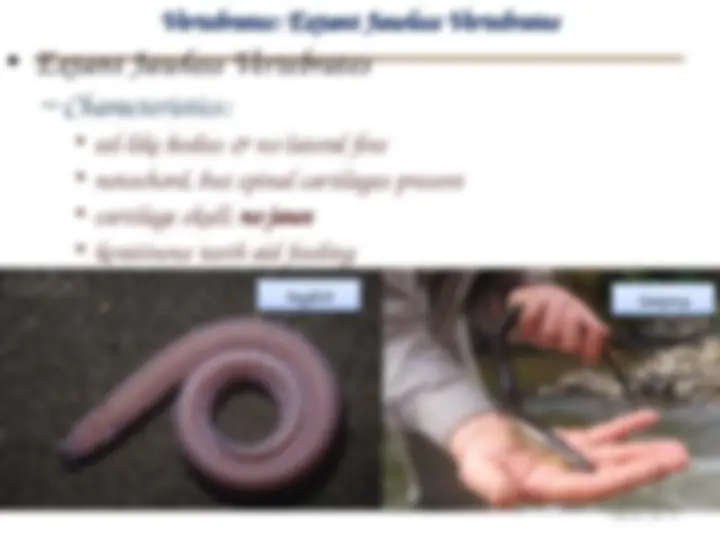
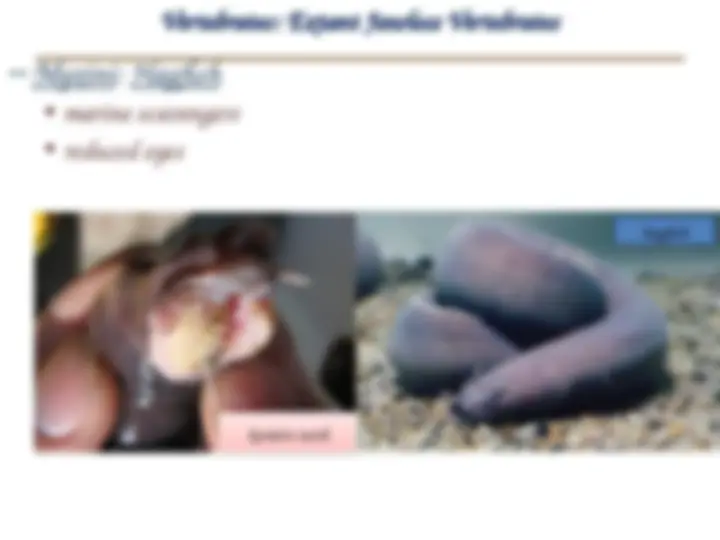
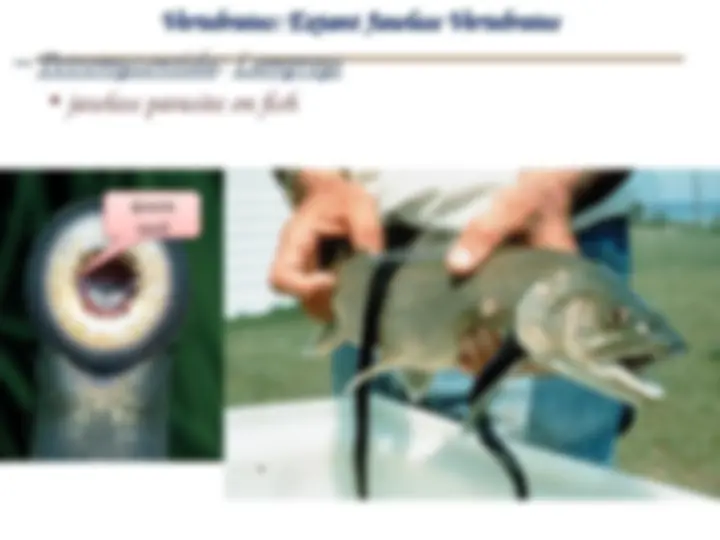

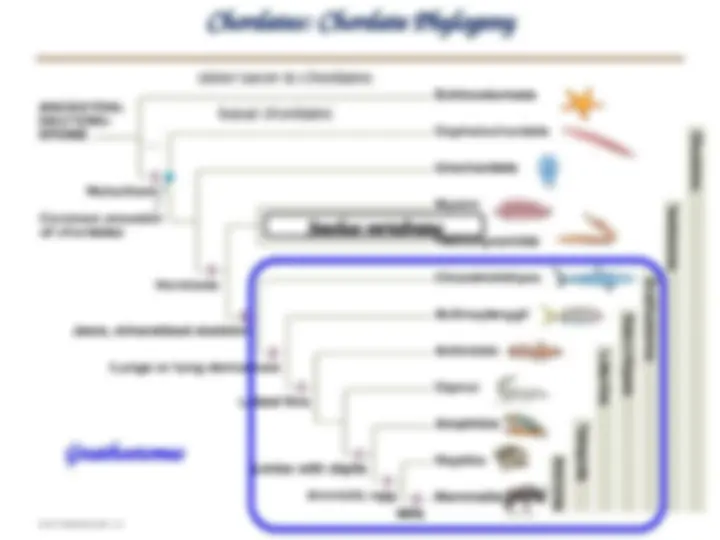
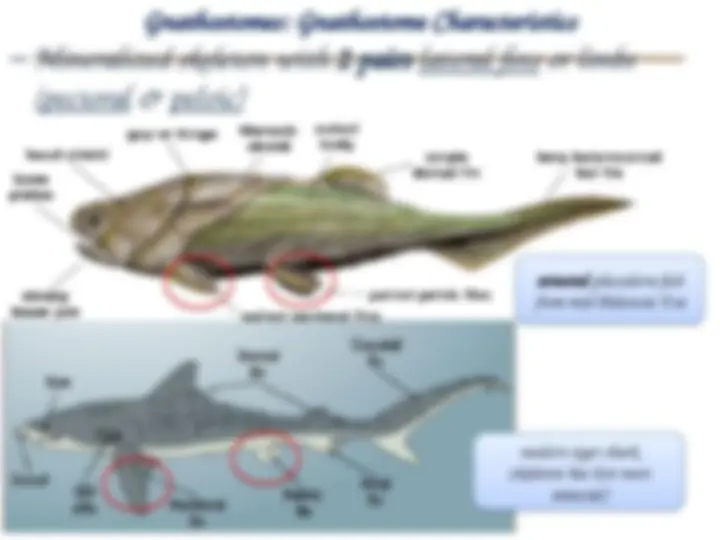
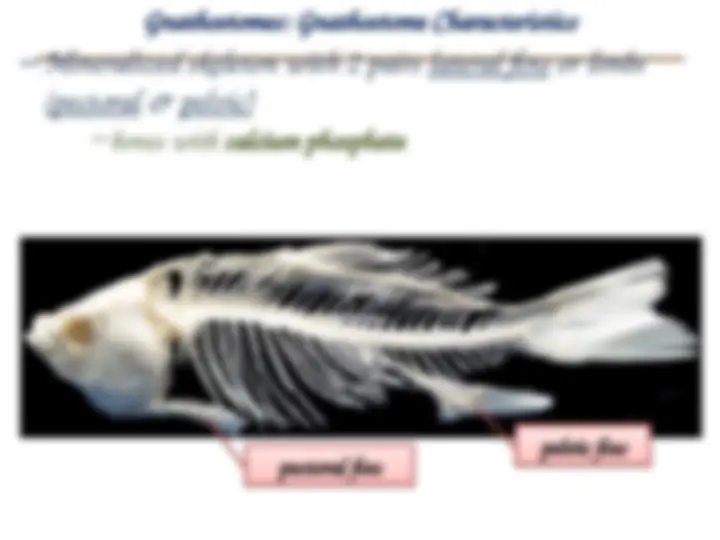
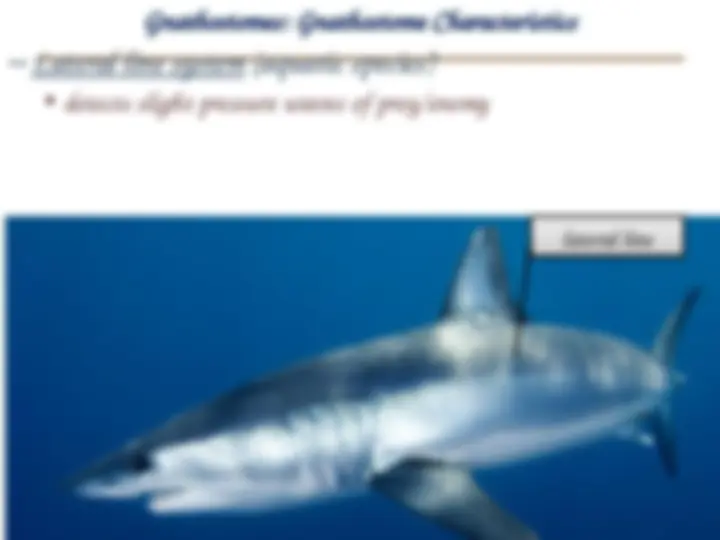
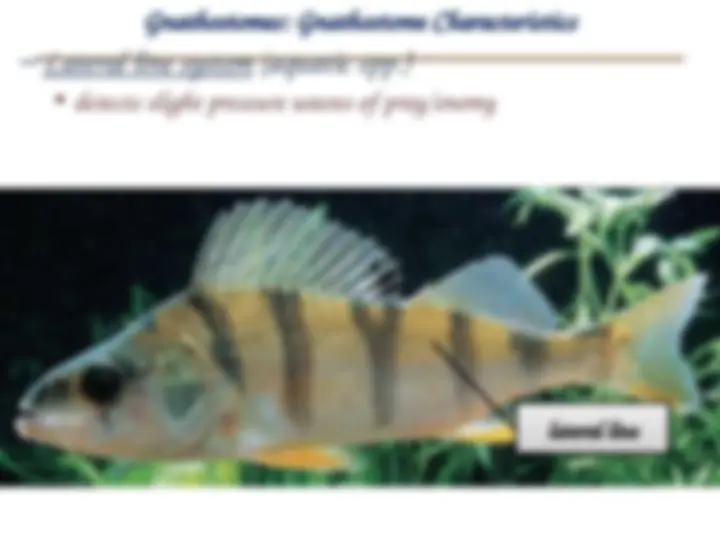
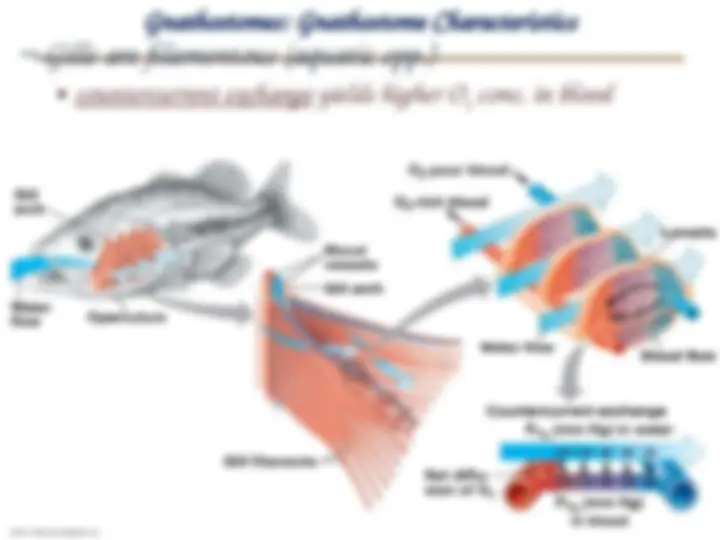
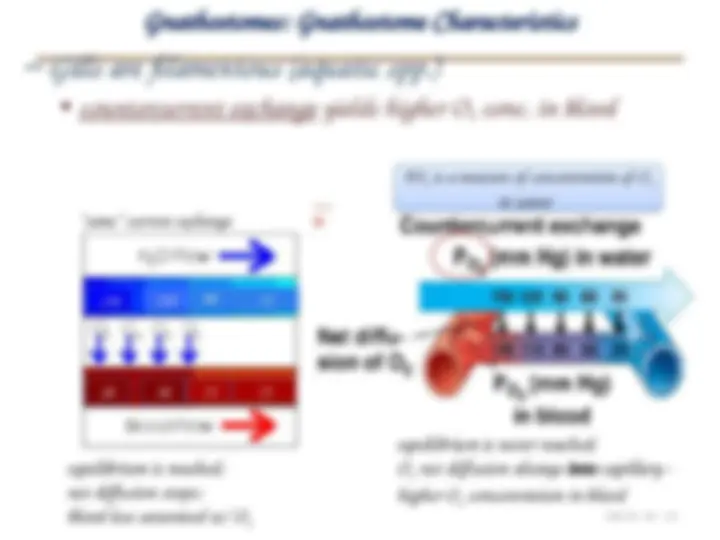
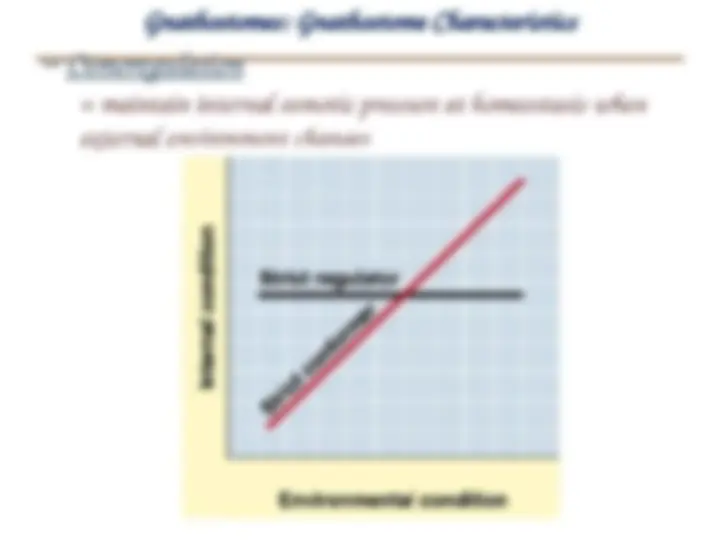
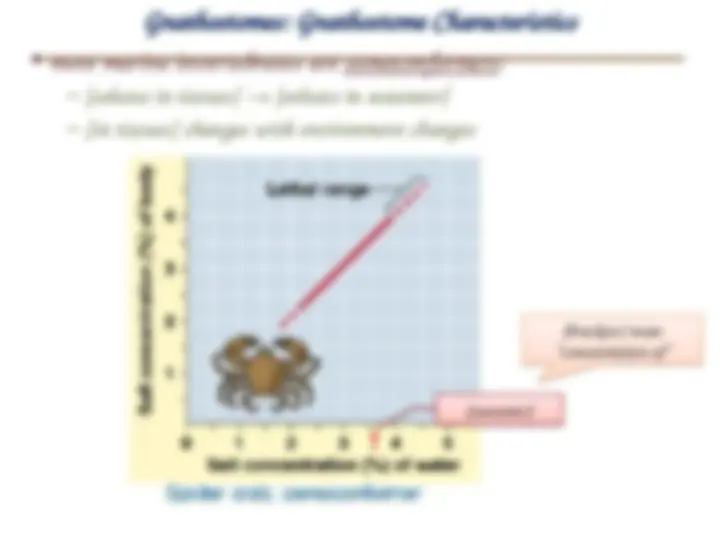
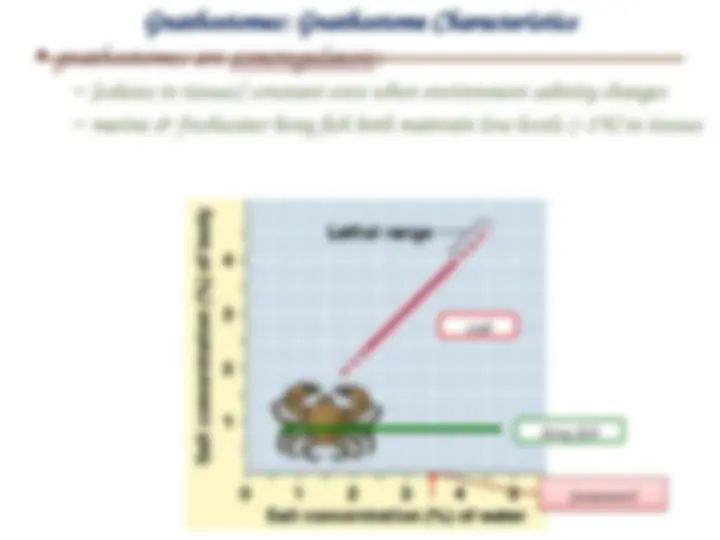
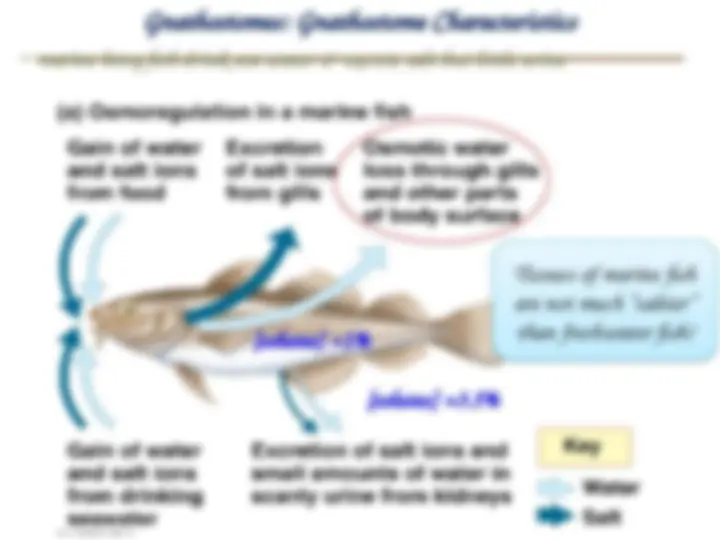
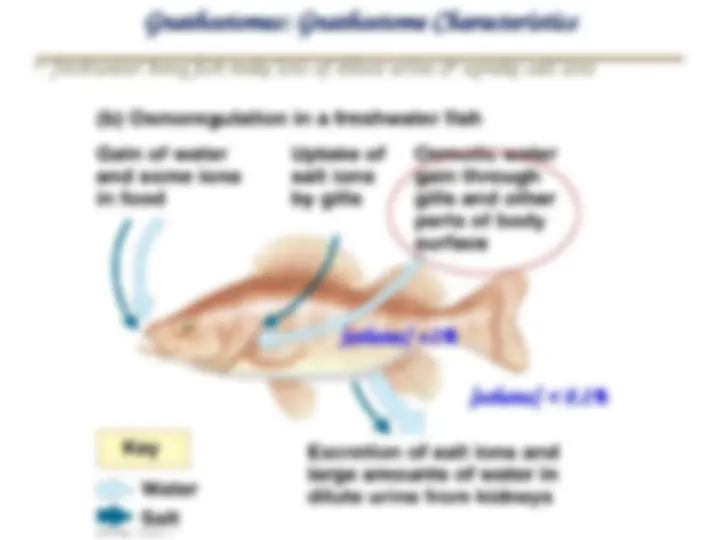
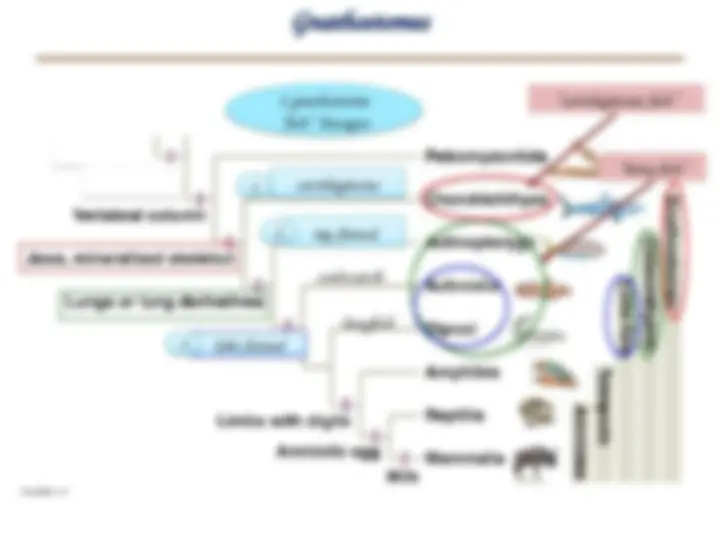


Study with the several resources on Docsity

Earn points by helping other students or get them with a premium plan


Prepare for your exams
Study with the several resources on Docsity

Earn points to download
Earn points by helping other students or get them with a premium plan
Community
Ask the community for help and clear up your study doubts
Discover the best universities in your country according to Docsity users
Free resources
Download our free guides on studying techniques, anxiety management strategies, and thesis advice from Docsity tutors
An overview of the phylogeny of Chordates, focusing on the characteristics of Chordates and the evolution of Vertebrates. Topics include the structure of the vertebral column, the development of a head with sensory organs, and the emergence of jaws and teeth. Additionally, it covers the circulatory and respiratory systems in early and modern vertebrates.
What you will learn
Typology: Lecture notes
1 / 29

This page cannot be seen from the preview
Don't miss anything!






















Chordates: Chordate Phylogeny
CBJ Ch. 34 - 1
sister taxon to chordates
basal chordates
Jawless vertebrates
Vertebrates: Vertebrate Characteristics
enclose spinal cord (dorsal nerve cord)
in most, vertebral column replaces notochord as main body
support
nerve cord runs
here
nerve cord runs
here
notochord
Vertebrates: Vertebrate Characteristics
enclose spinal cord (dorsal nerve cord)
in most, vertebral column replaces notochord as main body
support
spinal cord spinal cord
human
vertebral
column
human
vertebral
column
vertebra body
vertebra body
intervertebral disk
intervertebral disk
ventral
ventral
dorsal
dorsal
dorsal
dorsal
Vertebrates: Vertebrate Characteristics
enclose spinal cord (dorsal nerve cord)
in most, vertebral column replaces notochord as main body
support
CBJ Ch. 34 - 5
Vertebrates: Vertebrate Characteristics
closed circulatory system
with hemoglobin in blood cells
Learn basic
circulation
pattern &
terms
Learn basic
circulation
pattern &
terms
More efficient delivery
of O
2
to tissues
supports active
lifestyle.
More efficient delivery
of O
2
to tissues
supports active
lifestyle.
Vertebrates: Vertebrate Characteristics
muscle action with rods aids ventilation of gills
allowed earliest vertebrates to suck in food
Vertebrates: Extant Jawless Vertebrates
marine scavengers
reduced eyes
hagfish
keratin teeth
keratin teeth
Vertebrates: Extant Jawless Vertebrates
hagfish are famous for defensive slime
Vertebrates: Extant Jawless Vertebrates
jawless parasite on fish
keratin
teeth
keratin
teeth
Gnathostome Characteristics
Chondrichthyes: Cartilaginous Fish
Osteichthyes: “Bony Fish”
(includes ray-finned Actinopterygii & lobe-finned Actinistia & Dipnoi)
Gnathostomes: Gnathostome Characteristics
derived from gill slit supports
usually have bony teeth (predation!)
jawless fish jawless fish
early jawed fish
(placoderm)
early jawed fish
(placoderm)
modern jawed fish
modern jawed fish
Gnathostomes: Gnathostome Characteristics
bones with calcium phosphate
pelvic fins pelvic fins
pectoral fins
pectoral fins
Gnathostomes: Gnathostome Characteristics
detects slight pressure waves of prey/enemy
lateral line lateral line